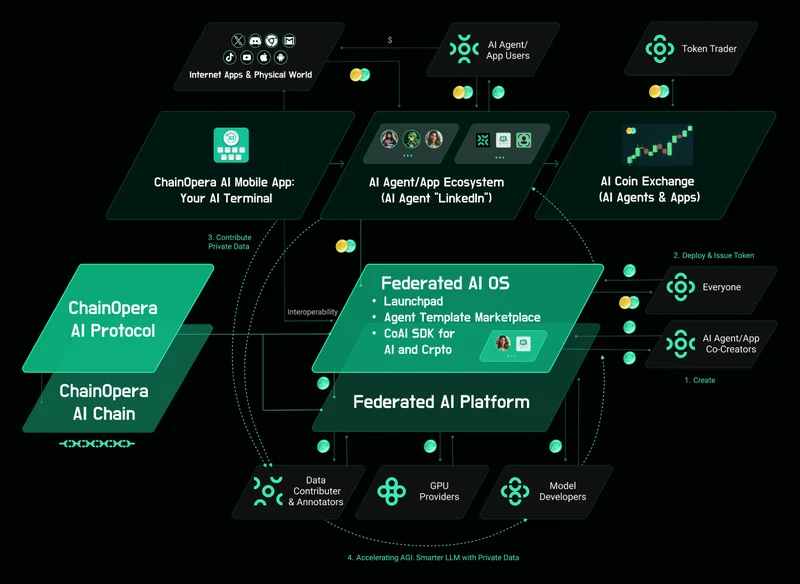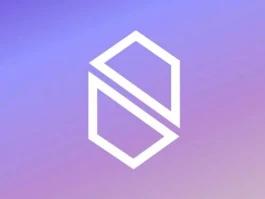I’ve seen a lot of rockets launch in my time. Some soar. Some explode on the pad. But I don’t think I’ve ever seen anything quite like the launch of ChainOpera AI. In the span of just 17 days this October, its token, COAI, went from a quiet murmur at $0.14 to a deafening scream at $44.90—a gain of over 13,500%—before tumbling back to earth in a shower of sparks and panicked headlines.
The crypto world, never one for understatement, immediately split into two camps. To one side, it was the ride of a lifetime. To the other, it was the “top scam of October,” a textbook case of manipulation and hype. You can look at the ChainOpera AI Price: COAI Live Price Chart, Market Cap & News Today, the accusations of synchronized wallet trades, and the brutal 90% correction and easily conclude the skeptics were right. Another bubble popped. Move on.
But I think that’s the wrong conclusion. In fact, I think it misses the point entirely.
What we witnessed wasn’t just the chaotic birth of another crypto token. It was the market’s violent, convulsive attempt to price an idea so profoundly disruptive it doesn’t have a category yet. This wasn’t about a price chart; it was about a paradigm shift. And paradigm shifts are never, ever clean.
Beyond the Price Chart's Chaos
To understand what’s really happening, you have to look past the ticker and at the people behind the code. ChainOpera AI wasn’t born in an anonymous Discord channel. It’s the brainchild of Professor Salman Avestimehr of USC, a world-renowned expert in information theory, and Dr. Aiden Chaoyang He, a veteran of Meta, Google, and AWS. These aren’t opportunists chasing a trend; they are serious academics and engineers who have been working on the core technology since 2019.
Their goal is to build what they call “Crypto AGI”—in simpler terms, an artificial general intelligence that isn't owned by a single corporation, but by everyone who participates in building it. Forget asking a centralized AI for answers. Imagine a global network of intelligent “agents” that you can create, own, and collaborate with. A world where the intelligence that shapes our future isn’t locked away in a server farm in Silicon Valley, but is a public utility, a shared resource for all of humanity.
When I first read through their whitepaper on the “Proof of Intelligence” consensus mechanism, I honestly just leaned back and stared at my screen. This is it. This is the kind of architectural shift that reminds me why I fell in love with technology in the first place. They’re not just bolting AI onto a blockchain; they’re building a new kind of digital bedrock specifically designed to host a collective intelligence.

This is the kind of idea that makes people either incredibly excited or deeply uncomfortable, because it threatens the very foundation of how we think about technology and power. Is it any wonder the market reacted with such bipolar fury? You don't see a 13,500% spike for a project that’s just a mild improvement on the status quo. That kind of volatility is a measure of potential energy. It’s the Richter scale reading for a technological earthquake.
The Architecture of a New Mind
So, what is this new architecture? It’s a vision built on a few key pillars that, together, represent a radical departure from Big Tech’s AI playbook. First, there’s Federated Learning. For years, the model has been simple: give all your data to a giant corporation, and they’ll train their AI on it. ChainOpera flips this on its head. Using their framework, AI models can be trained across decentralized devices without your personal data ever leaving your machine. It’s privacy-preserving AI by design, not as an afterthought.
Then you have the Multi-Agent Systems. This isn't just about building a better chatbot, it's about creating a global, collaborative intelligence where autonomous agents can learn from each other, share insights, and solve problems on a scale we can't even fathom—it’s the digital equivalent of a Cambrian explosion for artificial thought, happening right on the blockchain. What happens when a million specialized AI agents, owned by a million different people, can suddenly work together? What new kinds of creativity and problem-solving become possible?
This shift from a centralized, corporate-owned AI to a decentralized, community-owned one feels as significant as the invention of the printing press. Before Gutenberg, knowledge was controlled by a small group of scribes who painstakingly copied manuscripts. The press didn't just make books cheaper; it decentralized access to information, sparking revolutions in science, art, and politics. We are at a similar inflection point with intelligence itself.
Of course, with this kind of power comes immense responsibility. Building a decentralized AGI means we, the community, are the ones who must instill it with our values. The guardrails won't be set by a corporate ethics board; they'll be set by us, through transparent, on-chain governance. The reports of an “F” cybersecurity rating or high wallet concentration aren’t reasons to dismiss the project; they are urgent calls to action for the community to demand better, to build stronger, to ensure this powerful new tool serves everyone.
The initial frenzy may be over. The price has settled, the tourists have gone home. But what remains is the blueprint. What remains is a team with a world-class pedigree and a vision that, frankly, makes most other crypto projects look like child’s play. The wild price action wasn’t the story. It was the trailer.
The Future Just Had a Rough Draft
Let's be clear. The road ahead for ChainOpera AI is fraught with peril. It’s a high-stakes, high-risk endeavor to build something entirely new. But the chaos of its first month in the public markets wasn't a sign of failure. It was a sign of significance. The market saw a ghost of the future, and it panicked. Now the dust is settling, and the real work begins—the slow, difficult, and beautiful process of turning that volatile vision into a stable reality. And I, for one, can't wait to see what we build.


